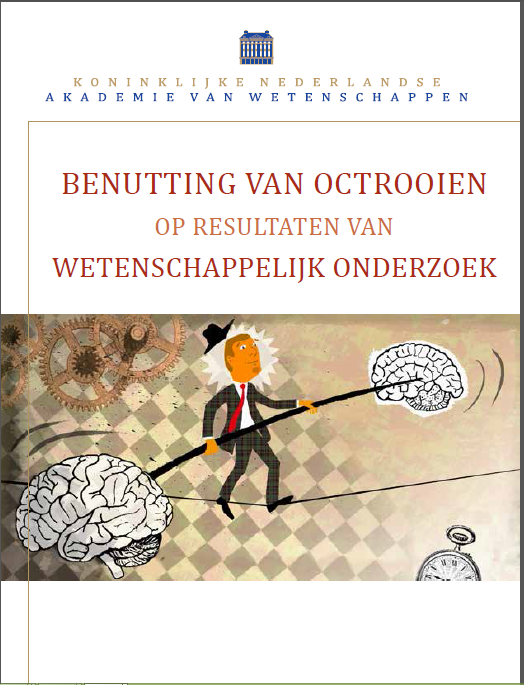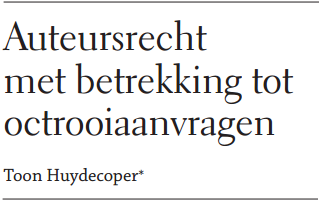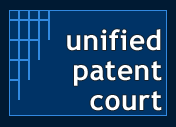KNAW, Benutting van octrooien op resultaten van wetenschappelijk onderzoek, Bijlage bij Kamerstukken II 2013-2014, 29 338 nr. 131.
 Op verzoek van de staatssecretaris van OCW hebben de KNAW, VSNU, NFU en NWO een inventarisatie verricht van de praktijk van benutting van intellectuele eigendom, vooral van octrooien, op resultaten van wetenschappelijk onderzoek aan universiteiten en instituten. Aanleiding hiervoor waren vragen van de Tweede Kamer over mogelijk betere benutting “bij het beginnen van start-ups en het vinden van investeerders”. De inventarisatie is langs twee sporen uitgevoerd. Het eerste spoor betreft een kwantitatieve analyse van aantallen octrooien in de afgelopen jaren. Deze analyse is vooral gebaseerd op onderzoek van het NL Octrooicentrum, van het Rathenau Instituut en van MERIT.
Op verzoek van de staatssecretaris van OCW hebben de KNAW, VSNU, NFU en NWO een inventarisatie verricht van de praktijk van benutting van intellectuele eigendom, vooral van octrooien, op resultaten van wetenschappelijk onderzoek aan universiteiten en instituten. Aanleiding hiervoor waren vragen van de Tweede Kamer over mogelijk betere benutting “bij het beginnen van start-ups en het vinden van investeerders”. De inventarisatie is langs twee sporen uitgevoerd. Het eerste spoor betreft een kwantitatieve analyse van aantallen octrooien in de afgelopen jaren. Deze analyse is vooral gebaseerd op onderzoek van het NL Octrooicentrum, van het Rathenau Instituut en van MERIT.
De opstellers van het onderhavige rapport zijn deze organisaties veel dank verschuldigd voor het ter beschikking stellen van hun onderzoeksgegevens. Het tweede spoor betreft een kwalitatieve analyse van de gang van zaken bij de interactie tussen universiteiten, instituten en bedrijven. Daarbij zijn 35 deskundigen gehoord Ook hen is veel dank verschuldigd.
Uit de analyses komt het volgende beeld naar voren:
Doel van octrooien
Onderwijs, onderzoek en valorisatie vormen de drie kerntaken van de Nederlandse universiteiten. Voor instituten is de onderwijstaak een belangrijke secundaire taak. De kerntaken staan alle drie in het teken van kenniscirculatie. Bij onderwijs verloopt dat via de mobiliteit van hoogopgeleiden, bij onderzoek door zo toegankelijke mogelijke publicaties, en bij valorisatie door het slaan van bruggen tussen wetenschap en maatschappij. Bij de ontwikkeling van commerciële bedrijvigheid, een aspect van valorisatie, kan juridisch beschermde kennis (intellectuele eigendom, in het bijzonder octrooien) nodig zijn. Benutting van octrooien op resultaten van wetenschappelijk onderzoek is dus een deel van valorisatie. Anders gezegd: valorisatie is veel breder dan benutting van octrooien.
Het genereren van eigen inkomsten uit octrooien is volgens de wetenschapsorganisaties geen primaire drijfveer voor universiteiten en instituten. Verwachtingen over hun inkomsten uit octrooien mogen dan ook niet hooggespannen zijn. Voordat octrooien eventueel winst opleveren zullen ondernemers immers eerst moeten investeren en risico moeten dragen. Die rol past niet primair bij universiteiten en instituten. Wel eist de Europese mededingingswetgeving dat er een marktconforme prijs wordt bedongen.
Wereldwijd gezien halen universiteiten hooguit enkele procenten van hun onderzoeksbudget uit licenties, royalty’s en eigendomsoverdracht van octrooien. In de praktijk lukt het vaak wel om de operationele kosten van universiteiten voor kennisoverdracht uit de inkomsten te dekken. In een beperkt aantal gevallen zijn de universitaire inkomsten uit
een octrooi significant (> € 100.000 per octrooi). Bij een te sterk commerciële benadering van valorisatie bestaat bovendien het risico dat de wetenschappelijke onafhankelijkheid in het geding komt.
Een nationaal octrooifonds, waarvan de staatssecretaris heeft gevraagd de wenselijkheid te onderzoeken, verstoort de kritische kostenafweging voor het al dan niet aanvragen van een octrooi. De beschikbaarheid van voldoende budget wordt bovendien niet als een groot knelpunt gezien. Een landelijk octrooifonds is in de analyse van de wetenschapsorganisaties
daarom niet nodig noch wenselijk. Op instellingsniveau is voldoende budget beschikbaar.
Conclusie 1
Octrooien zijn een middel om innovatieve bedrijvigheid te bevorderen. Deze vorm van commercialisatie is maar één aspect van valorisatie (benutting van wetenschappelijke kennis van universiteiten en instituten). Valorisatie is derhalve veel breder dan het aanvragen en beheren van octrooien. Eventuele inkomsten uit octrooien worden vooral door bedrijven gerealiseerd. Wereldwijd halen universiteiten en instituten slechts enkele procenten van hun onderzoeksbudget uit octrooien. Incidenteel bedragen de inkomsten meer dan een ton per octrooi.
Conclusie 2
Een nationaal octrooifonds is niet nodig noch wenselijk.
Stijgende lijn aantal octrooien
Het aantal aangevraagde octrooien van Nederlandse kennisinstellingen laat sinds 1980 een stijgende lijn zien. Voor die tijd vroegen universiteiten en instituten nauwelijks octrooien aan. Van alle in Nederland aangevraagde octrooien is zo’n 5% afkomstig van kennisinstellingen (peiljaar 2009). In de periode 2000-2010 gaat het om gemiddeld zo’n dertig octrooiaanvragen per universiteit per jaar, met grote verschillen tussen universiteiten. Dit is vergelijkbaar met het gemiddelde van andere universiteiten in Europa en de Verenigde Staten. De instituten van KNAW en NWO vroegen in 2006- 2012 samen 82 octrooien aan. Kwekersrecht en auteursrecht op software spelen binnen de kennisinstellingen een marginale rol.
Van de dertig ‘universitaire’ octrooiaanvragen staan er twintig op naam van bedrijven. Dit kan worden geduid als een positieve indicatie van benutting omdat het octrooi ex ante reeds aan het bedrijfsleven is overgedragen. De overige tien staan op naam van de universiteit, waarbij in ruim tien procent van de gevallen sprake is van een soms exclusieve licentie aan een bedrijf. Daarnaast worden op basis van aangevraagde octrooien regelmatig spin-off-bedrijven opgericht, gemiddeld zes tot zeven per universiteit per jaar in periode 2000-2010. Omdat de genoemde getallen gemiddelden zijn over een lange periode met een sterk stijgende trend zijn de huidige jaarlijkse gemiddelden hoger dan in voorgaande jaren. In 2009 lag het gemiddelde per universiteit op 37,6 octrooiaanvragen.
Het aantal aangevraagde of verleende octrooien is geen goede maat voor kennisbenutting en moet geen doel op zich worden. Aanvraag en eigendom van een octrooi zijn bovendien duur, vooral na de fase waarin een keuze moet worden gemaakt voor dekking in veel landen. Daarom vragen universiteiten alleen octrooi aan als dat nuttig en nodig wordt geacht. In de praktijk is dat meestal omdat er al een bedrijf is of wordt voorzien dat het octrooi wil benutten. Soms wordt octrooi aangevraagd en gedurende langere tijd in bezit gehouden om strategische redenen. Dan gaat het vaak om het creëren van een bredere onderzoeksportfolio om zo een voor bedrijven aantrekkelijke positie op te bouwen. Hiermee gebruiken universiteiten in de praktijk de juiste randvoorwaarden van kosten en baten bij het aanvragen en beheren van octrooien.
Conclusie 3
Het gemiddelde aantal jaarlijks aangevraagde octrooien van Nederlandse universiteiten is vergelijkbaar met de gemiddelden van universiteiten in Europa en de Verenigde Staten. Bij meer dan tweederde van de Nederlandse octrooien is sprake van eigendomsoverdracht of van licenties aan bestaande of nieuwe bedrijven. De soms gehoorde suggestie dat veel octrooien onbenut blijven strookt derhalve niet met de feiten.
TTO’s
De mate waarin de stijging in octrooiaanvragen de komende jaren zal doorzetten hangt af van verschillende factoren, waaronder de inzet van Technology Transfer Offices (TTO’s). Bijna alle kennisinstellingen hebben zulke bureaus opgericht om kennisoverdracht (niet alleen ‘technologie’) te bevorderen. Dat verklaart voor een deel de stijgende lijn in het aantal aangevraagde octrooien. TTO’s zijn nog relatief jong en het opbouwen van expertise en ervaring is in volle gang. Aanvankelijk was de focus daarbij vooral gericht op nieuwe bedrijvigheid in de vorm van start-ups. Daarna verbreedde het werkterrein door in onderzoeksconsortia aansluiting te zoeken bij bestaande bedrijven. Op dit ogenblik gaat het om het realiseren van kennisecosystemen. Dat zijn innovatienetwerken van kennisinstellingen, bedrijven en overheden. Wetenschap en
bedrijfsleven hebben daarin het meest aan elkaar.
De kern van de TTO-functie is het stimuleren van bedrijvigheid op basis van wetenschappelijke kennis (business development). Daarnaast vervullen veel TTO’s aanvullende taken, zoals dienstverlening aan onderzoekers bij subsidieaanvragen en onderzoekscontracten. Dat is niet alleen nuttig, maar ook nodig voor het opbouwen van een goede relatie tussen TTO en onderzoeker. De beste ervaringen worden gemeld met TTO’s die dicht op de werkvloer actief zijn en inhoudelijk goed thuis zijn in de betreffende wetenschapsgebieden en de bijbehorende markten. Als TTO-ers dicht bij de onderzoekers zitten kunnen ze efficiënter en effectiever meedenken bij de uitwerking, onderbouwing en afbakening van de octrooiclaims.
Nederlandse TTO’s verschillen per universiteit en bevinden zich bovendien in uiteenlopende stadia van ontwikkeling, wat de verschillen versterkt.
Conclusie 4
Er is sprake van significante verschillen in kwaliteit tussen de Nederlandse TTO’s. Dit vindt zijn oorzaak onder andere in de steile leercurve die TTO’s doormaken.
Aanbeveling 1: intervisie
Om het doorlopen van de leercurve te versnellen kunnen de VSNU, NFU, NWO en de KNAW onderlinge intervisie van de TTO’s c.q. TTO-functies organiseren en stimuleren.
Zij kunnen daarbij op hoofdlijnen streven naar verdere uniformiteit en transparantie van geschreven en ongeschreven regels en naar verdere kwaliteitsverbetering van werkwijzen rond kennisbenutting van universiteiten en instituten, bijvoorbeeld
gericht op start-ups en investeerders. Deze aanbeveling kan het best worden opgepakt binnen overlegorganen van TTO’s van de VSNU/NFU en KNAW/NWO. Samenwerking van dergelijke overlegorganen in één gremium kan het leereffect ten goede komen.
Onbenut potentieel
Hoewel er weinig octrooien onbenut ‘op de plank’ liggen, betekent dit niet dat alle kennis die aan de Nederlandse kennisinstellingen wordt ontwikkeld optimaal wordt benut. Onbenut potentieel is ongewenst, gelet op het belang van innovatie. De situatie vraagt met enige urgentie om verbetering. Er is op twee manieren sprake van onbenut
potentieel.
Ten eerste liggen er nog volop mogelijkheden voor kennisbenutting zonder dat daarbij octrooien of andere vormen van intellectuele eigendom, zoals auteursrecht, een rol spelen. Zoals gezegd is valorisatie veel breder dan benutting van octrooien. Te denken valt bijvoorbeeld aan wetenschappelijke advisering en het optreden als expert door individuele onderzoekers en het ter beschikking stellen van collecties en instrumenten, maar ook optreden en publiceren in populaire media en meedoen aan het publieke debat. Een brede inventarisatie van de praktijk van valorisatie valt echter buiten de
vraag van de staatssecretaris.
Ten tweede is het waarschijnlijk dat met meer aandacht en meer inspanning meer octrooieerbare vindingen kunnen worden geïdentificeerd of betere octrooien kunnen worden voorbereid. Daarbij is de intermediaire rol van TTO’s onontbeerlijk. Het belang hiervan zal nog toenemen omdat er steeds complexere octrooiportfolio’s ontstaan.
Om octrooieerbare vindingen te identificeren is een TTO-functie nodig die zo dicht mogelijk bij het onderzoek in de instellingen actief is en die zich in ieder geval richt op het sterkste onderzoek, ook om in nog weinig ontgonnen wetenschapsgebieden meer beweging in benutting van octrooien te krijgen.
Uit good practices van buitenlandse TTO’s met een lange track record kunnen enkele kenmerken en –getallen worden gedestilleerd die als richtsnoer dienen voor de volwassenwording van jonge TTO’s. Nederlandse TTO’s gebruiken die ook al. Het gaat daarbij om functies die een TTO in ieder geval moet kunnen vervullen, zoals het speuren naar octrooieerbare vindingen, het aanvragen ervan, kunnen onderhandelen met marktpartijen, contracten en samenwerkingsovereenkomsten kunnen afsluiten, ondernemingsplannen opstellen, bedrijven oprichten, etc. Dat betekent dat de bezetting van een TTO al gauw tien fte vereist, met daarin professionals met passend expertiseniveau, met voldoende mandaat van het College van Bestuur en die zowel het gesprek met de onderzoeker als met de industrieel kunnen aangaan. Door zo’n mandaat af te geven en te dragen, geven bestuur en directie ook aan hoe serieus de TTO-functie is. De kwaliteit van het TTO-team is een doorslaggevende factor in de benutting van intellectuele eigendom op resultaten van wetenschappelijk onderzoek.
De samenstelling van het team kan variëren.
De kwaliteit van het team moet blijken uit de geleverde prestaties. Die moeten daarom in evaluaties worden meegenomen. Daarom is het aan te bevelen dat TTO’s hun prestaties openbaar en toegankelijk maken, bij voorkeur op een landelijke website.
Daarvoor is het noodzakelijk dat alle benutting van octrooien via de TTO’s loopt. Dit sluit goed aan bij het realiseren en monitoren van de derde hoofdtaak van valorisatie (naast onderwijs en onderzoek) van universiteiten en instituten. De wetenschapsorganisaties kunnen de ontwikkeling van hun TTO-functie stimuleren door een systeem van intervisie en evaluatie in te voeren.
Voor specifieke en sterke gebieden, zoals bijvoorbeeld cardiologie en oncologie, valt te denken aan een landelijke TTO-functie, naar het goede voorbeeld van sommige landelijk opererende TTO’s in het buitenland. Excellente institutionele TTO’s vormen daarbij een basisvoorwaarde. Om naast cardiologie en oncologie ook drie tot vijf andere gebieden te identificeren waarbij een landelijke TTO-functie nuttig is, kan een tender worden uitgeschreven die door de Technologiestichting STW wordt uitgevoerd.
Conclusie 5
Door verdere kwaliteitsverbetering van de TTO’s en verhoging van de bewustwording bij onderzoekers kunnen meer octrooieerbare vindingen worden geïdentificeerd en kan de kwaliteit van de aanvragen toenemen. Het aantal octrooien moet echter geen doel op zich worden. Octrooiaanvragen zijn alleen zinvol als de kans op benutting realistisch
is. Er zijn volop andere mogelijkheden voor meer valorisatie, want benutting van octrooien is immers maar een klein aspect ervan.
Aanbeveling 2: stevig mandaat
Besturen van universiteiten en instituten moeten verder investeren in de kwaliteit van hun TTO’s. Hierbij past dat een TTO stevig mandaat heeft, en dat mandaat kan dragen. Daarom moet een TTO in staat zijn om medewerkers met een passend expertiseniveau aan te trekken.
Aanbeveling 3: transparantie
De wetenschapsorganisaties moeten stimuleren dat TTO’s binnen twee jaar via een openbaar toegankelijke website inzichtelijk maken, voor zover niet strijdig met belangen en eventueel geanonimiseerd, welke kansen voor benutting van octrooien universiteiten en instituten hebben benut.
Aanbeveling 4: identificatie van octrooieer bare uitvindingen
De identificatie van octrooieerbare ideeën vraagt om het sterker verankeren van het belang ervan bij onderzoekers. Besturen van universiteiten en instituten moeten hun onderzoekers van dit belang doordringen.
Aanbeveling 5: landelijke tto ’s
Er is een impuls nodig door landelijk in te zetten op specifieke combinaties van sterke wetenschapsgebieden en markten. Deze landelijke functie kan bij wijze van experiment worden opgezet voor cardiologisch en oncologisch onderzoek en de vertaling daarvan naar diagnostische tests en therapieën. De Technologiestichting STW kan een tender uitvoeren voor drie tot vijf aanvullende gespecialiseerde landelijke centra.
Principes, regels, werkwijzen en belangen
De principes van universiteiten en instituten omtrent het beleid rond intellectuele eigendom zijn gelijk, hetgeen zich vertaalt in het gestelde onder het doel van octrooien. De daarvan afgeleide regels lijken op hoofdlijnen op elkaar maar zijn zeker niet uniform. Bovendien is er sprake van verschillen in toepassing van gelijke regels en soms van ongeschreven regels. Dit geldt evenzo voor (vaak tijdelijke) publiek-private onderzoeksconsortia. Vooral bedrijven vinden dit verwarrend en pleiten voor harmonisatie. Alle universiteiten hebben bijvoorbeeld een regeling voor marktconforme vergoeding van een octrooi en voor een billijke vergoeding aan de uitvinder(s). Kennis moet worden overgedragen voor een fair deal, maar wat fair is staat nergens geschreven. Daar komt onherroepelijk maatwerk aan te pas – precies datgene waar de professionele TTO volledig voor zou moeten zijn toegerust. Volledige uniformiteit in regels en uitvoering is daarom haalbaar noch wenselijk, en in de praktijk van onderhandelingen blijkt dat bedrijven niet zelden als eerste een eigen positie willen bedingen.
Dat publieke en private partijen verschillende belangen hebben hoeft geen beletsel te zijn voor vruchtbare samenwerking. De kunst is om in kennisecosystemen recht te doen aan ieders belangen binnen wettelijke kaders. Partijen verstaan deze kunst steeds beter, en door op de steile curve veel van elkaars ervaringen te leren kunnen TTO’s hierin verbetering aanbrengen. Dat gebeurt nu al intensief, maar de indruk bestaat dat dit nog beter kan door de TTO’s van alle kennisinstellingen en publiekprivate onderzoeksconsortia aan dit leerproces te laten deelnemen.
Conclusie 6
Ondanks gelijke uitgangspunten laten instellingen verschillen in regels en werkwijzen zien in de praktijk van benutting van octrooien. Bedrijven vinden dit verwarrend en het kan efficiënte en effectieve kennisoverdracht hinderen. Uniformiteit in regels en uitvoering is echter geen realistisch streven omdat er ruimte moet blijven voor maatwerk. Wel kunnen TTO’s ernaar streven hun werkwijzen zo transparant mogelijk te maken.
 C. Mulder, The Cross-Referenced Patent Cooperation Treaty, editie 2014.
C. Mulder, The Cross-Referenced Patent Cooperation Treaty, editie 2014. Standardization and intellectual property rights are key contributors to industrial innovation and industrial competitiveness. Standards ensure rapid diffusion of technologies and interoperability between products. Patents provide incentives for research and development and facilitate knowledge transfers. Many standards comprise innovative technologies that are protected by patents.
Standardization and intellectual property rights are key contributors to industrial innovation and industrial competitiveness. Standards ensure rapid diffusion of technologies and interoperability between products. Patents provide incentives for research and development and facilitate knowledge transfers. Many standards comprise innovative technologies that are protected by patents. Uit het
Uit het %20wikimedia.png) Antwoord. Ik kan bevestigen dat het Europees Octrooibureau op 26 februari 2014 Europees octrooi
Antwoord. Ik kan bevestigen dat het Europees Octrooibureau op 26 februari 2014 Europees octrooi  Nu heeft in het kader van een opdracht van de Orde van Octrooigemachtigden prof. Quaedvlieg [zie hier:
Nu heeft in het kader van een opdracht van de Orde van Octrooigemachtigden prof. Quaedvlieg [zie hier:  Op verzoek van de staatssecretaris van OCW hebben de KNAW, VSNU, NFU en NWO een inventarisatie verricht van de praktijk van benutting van intellectuele eigendom, vooral van octrooien, op resultaten van wetenschappelijk onderzoek aan universiteiten en instituten. Aanleiding hiervoor waren vragen van de Tweede Kamer over mogelijk betere benutting “bij het beginnen van start-ups en het vinden van investeerders”. De inventarisatie is langs twee sporen uitgevoerd. Het eerste spoor betreft een kwantitatieve analyse van aantallen octrooien in de afgelopen jaren. Deze analyse is vooral gebaseerd op onderzoek van het NL Octrooicentrum, van het Rathenau Instituut en van MERIT.
Op verzoek van de staatssecretaris van OCW hebben de KNAW, VSNU, NFU en NWO een inventarisatie verricht van de praktijk van benutting van intellectuele eigendom, vooral van octrooien, op resultaten van wetenschappelijk onderzoek aan universiteiten en instituten. Aanleiding hiervoor waren vragen van de Tweede Kamer over mogelijk betere benutting “bij het beginnen van start-ups en het vinden van investeerders”. De inventarisatie is langs twee sporen uitgevoerd. Het eerste spoor betreft een kwantitatieve analyse van aantallen octrooien in de afgelopen jaren. Deze analyse is vooral gebaseerd op onderzoek van het NL Octrooicentrum, van het Rathenau Instituut en van MERIT. Bijdrage ingezonden door Wouter Pors,
Bijdrage ingezonden door Wouter Pors,  Bijdrage ingezonden door Cees Mulder,
Bijdrage ingezonden door Cees Mulder,  Bijdrage ingezonden door Cees Mulder,
Bijdrage ingezonden door Cees Mulder, 

























































































